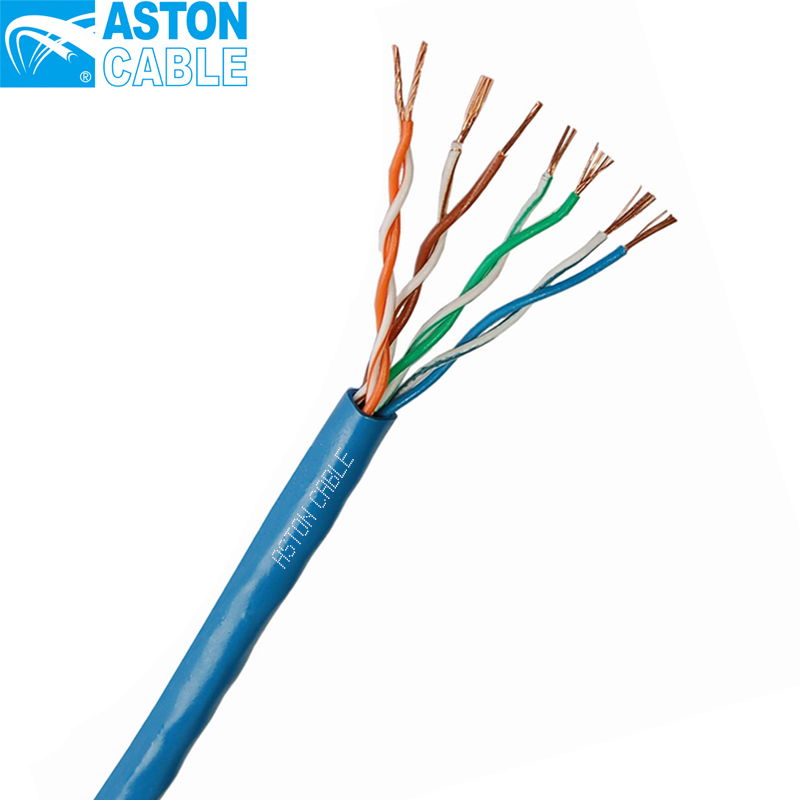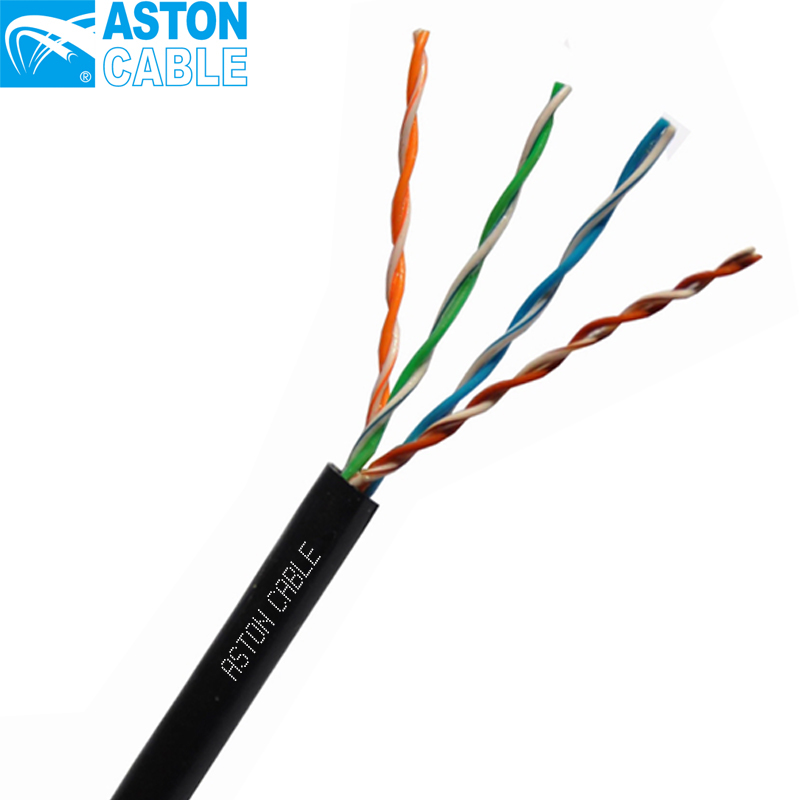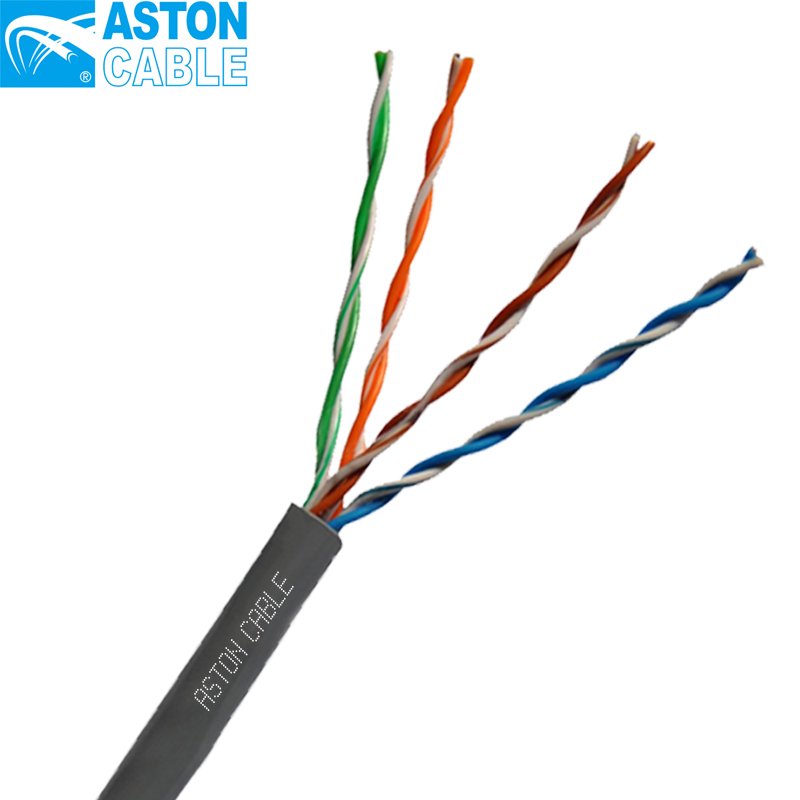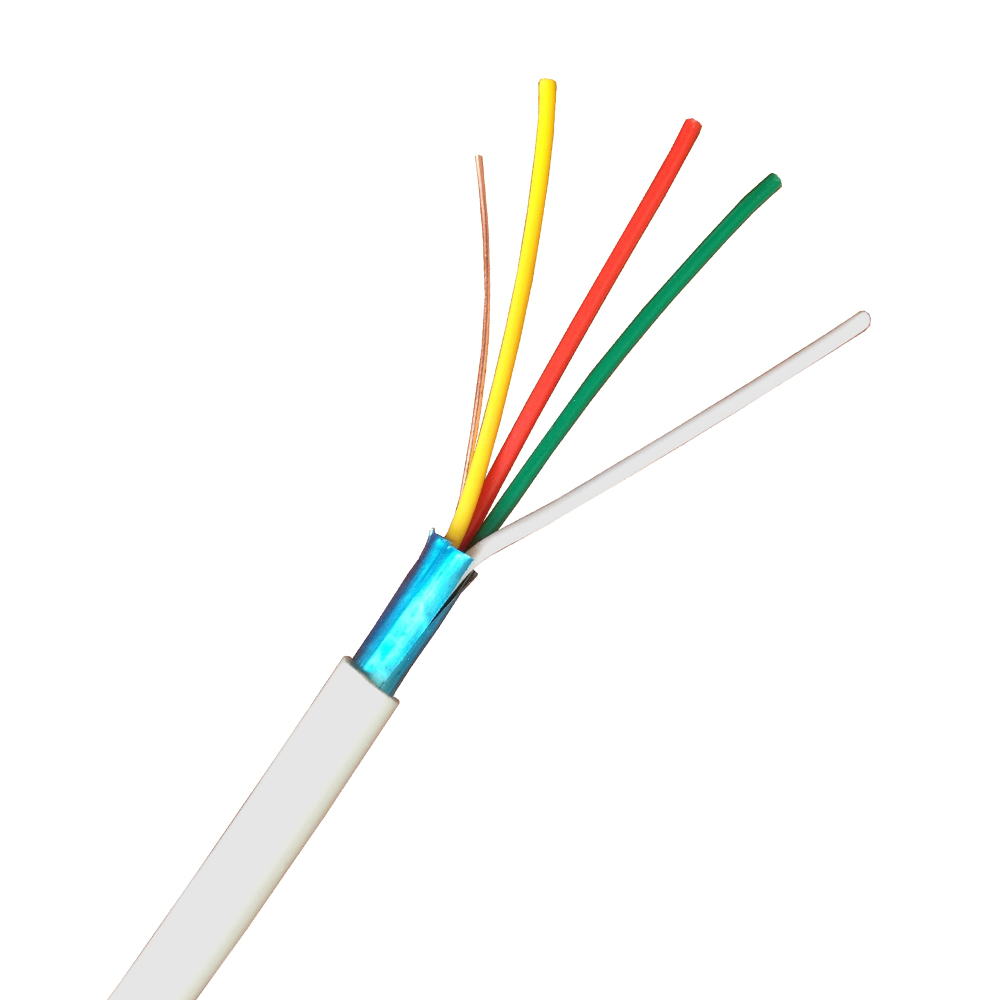· Product Details
| Place of Origin: | China |
| Brand Name: | ASTON or OEM |
| Certification: | SGS CE ROHS ISO9001 |
| Coaxial Cable Daily Output: | 200KM |
· Payment & Shipping
| Minimum Order Quantity: | 50km |
| Price(usd) | Negotiate |
| Packaging Details: | Normal export packaging |
| Supply Ability : | 25000KM/Per year |
| Delivery Port: | Ningbo |
· Specification
|
Product Name: |
LAN CABLE CAT5E |
Jackets: |
PVC, LSZH, PE |
|
Color: |
customized |
Conductor: |
24AWG |
|
Material: |
Bare Copper |
Logo: |
OEM |
|
Industrial Use: |
Network data |
Origin: |
Hangzhou Zhejiang |
· Quick detail
Conductor: Bare Copper Solid or Stranded Flexible section in 24AWG
Core: 4Pair stranded conductor
Insulation: HDPE
Retardant meet the requirement of IEC.
Outer Jacket: PVC, PE or LSZH
Flame Retardant meet the requirement of IEC.
Shielding: None
· Description
What is CAT5e Cable?
CAT5e, also known as Category 5e or Category 5 Enhanced, is a network cable standard ratified in 1999. CAT5e offers significantly improved performance over the old CAT5 standard, including up to 10 times faster speeds and a significantly greater ability to traverse distances without being impacted by crosstalk. CAT5e cables are typically 24-gauge twisted pair wires, which can support Gigabit networks at segment distances up to 100 m.
CAT5e vs. CAT6 Bandwidth
Both CAT5e and CAT6 can handle speeds of up to 1000 Mbps, or a Gigabit per second. This is more than sufficient for the speed of by far the most internet connections. The chance is small that you currently have an internet connection with which you can achieve up to 500 Mbps speed.
The main difference between CAT5e and CAT6 cable lies within the bandwidth, the cable can support for data transfer. CAT6 cables are designed for operating frequencies up to 250 MHz, compared to 100 MHz for CAT5e. This means that a CAT6 cable can process more data at the same time. Think of it as the difference between a 2- and a 4-lane highway. On you can drive the same speed, but a 4-lane highway can handle much more traffic at the same time.
CAT5e vs. CAT6 Speed
Because CAT6 cables perform up to 250 MHz which is more than twice that of CAT5e cables (100 MHz), they offer speeds up to 10GBASE-T or 10-Gigabit Ethernet, whereas CAT5e cables can support up to 1GBASE-T or 1-Gigabit Ethernet.
· Product Display
 |
 |














